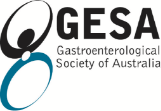
What is an endoscopy?
An endoscopy is an investigative procedure that examines the interior of the oesophagus. It allows the doctor to view the entire length of the oesophagus and identify any issues that may be present and if necessary, to take small samples of tissue for further testing.
Why might you need one?
An endoscopy may be required to diagnose and possibly treat a number of issues to do with the oesophagus or larynx such as acid reflux or achalasia, narrowing of the oesophagus. Your doctor might order an endoscopy if you are experiencing symptoms that are indicative of these such as heartburn, unexplained weight loss, nausea, pain in the chest or discomfort after eating and regurgitation. As these symptoms can often overlap each other, investigative procedures such as an endoscopy, are important because they help to determine the issue and make treatment possible.
General Procedure
A topical anaesthetic will be sprayed in the back of your throat which will numb and help to ease discomfort throughout the procedure. This procedure involves the insertion of an endoscope through the mouth. The endoscope is a tool that is fitted with a camera, light and has the ability to take small samples of tissue during the procedure. The vision is transmitted back to a video monitor which allows the examiner to identify any abnormalities. During the procedure you may feel pressure and will not be able to talk however your care team will do all they can to ensure you are calm and comfortable before commencing.
Post-Op Care
Depending on the type of sedative and pain relief used in the procedure will determine your after care. In most cases you will be monitored after the procedure to ensure that you vital signs remain within their acceptable parameters. If they remain stable you can usually leave one to two hours after the procedure. It is important to note however that you will likely not be able to drive and therefore you should make other arrangements for getting home from the procedure. Also, it is normal to experience a sore throat, bloating, gas and cramping after the procedure as well as drowsiness as the sedative given wears off.




